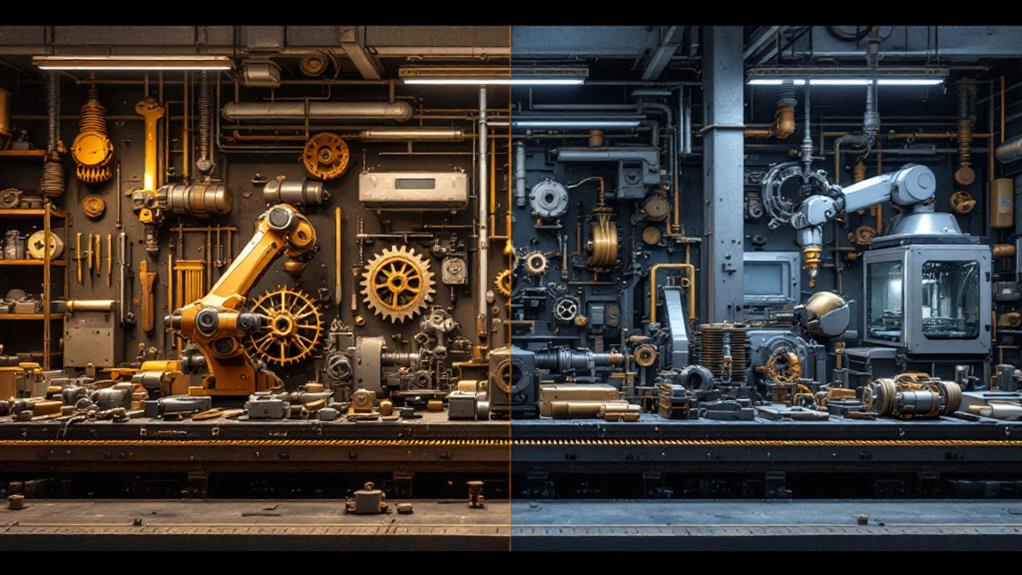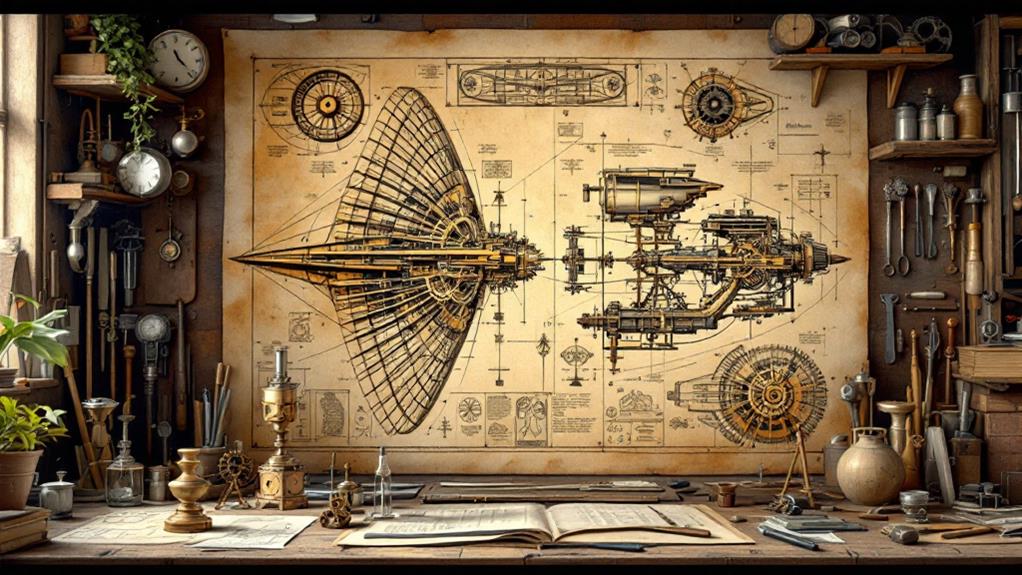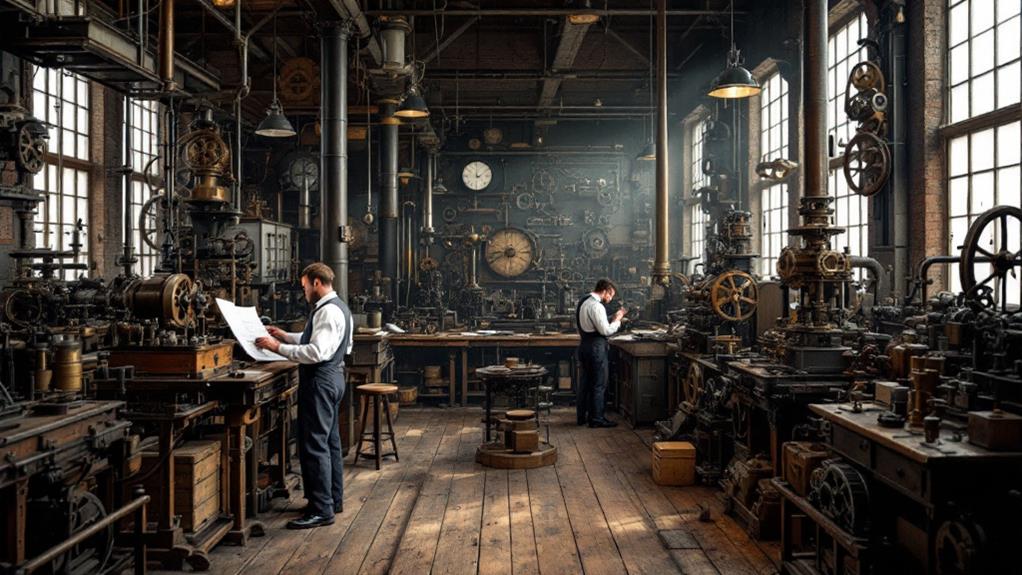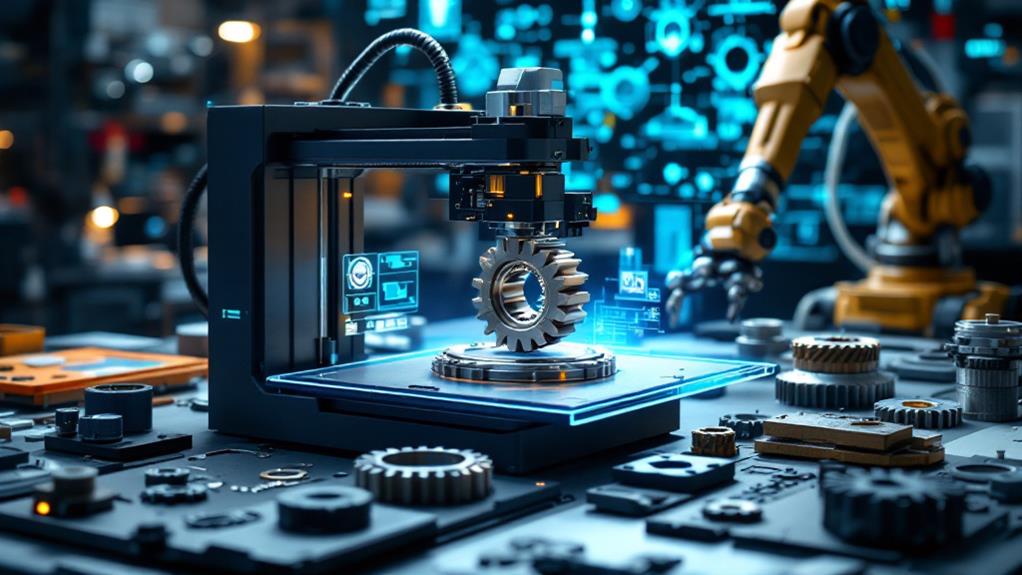The History of Mechanical Engineering: From Ancient Tools to Modern Machines

Mechanical engineering's roots trace back to ancient civilizations, where simple machines like levers and wheels revolutionized daily life. You'll find its evolution marked by pivotal inventions: from water-powered mills in ancient Greece to flying buttresses in medieval cathedrals. The Renaissance ushered in scientific breakthroughs, while the Industrial Revolution saw steam engines transform manufacturing. In the 20th century, aerospace engineering soared to new heights, and the digital era brought automation and robotics. Today, you're witnessing a field driven by sustainability, advanced materials, and AI integration. The expedition of mechanical engineering is far from over, with exciting innovations on the horizon.
Ancient Mechanical Innovations
Ancient civilizations kicked off the expedition of mechanical engineering with pioneering innovations that laid the foundation for modern technology. You'll find that these early advancements were often driven by necessity, as humans sought to improve their daily lives and military capabilities.
One of the most significant ancient mechanical innovations was the development of water-powered mills. These ingenious devices harnessed the power of flowing rivers to grind grain, saw wood, and perform other labor-intensive tasks. You can trace their origins back to ancient Greece and Rome, where they revolutionized agriculture and industry.
In the domain of warfare, catapult design emerged as an essential mechanical innovation. You'd be amazed at the sophistication of these siege weapons, which could hurl projectiles over great distances with exceptional accuracy. Ancient engineers constantly refined catapult designs, experimenting with different materials and tension mechanisms to increase their power and range.
Other notable ancient mechanical innovations include the wheel, pulleys, and levers. These seemingly simple tools formed the basis for more complex machines and continue to influence modern engineering principles to this day.
Medieval Engineering Advancements
The Middle Ages ushered in a fresh chapter of engineering innovation, building upon the foundations laid by ancient civilizations. You'll find that medieval engineers made significant strides in various fields, particularly in architecture and warfare.
Cathedral construction techniques evolved dramatically during this period. You'd see master builders employing innovative methods like flying buttresses and ribbed vaults to create soaring, awe-inspiring structures. These advancements allowed for taller, more elaborate designs with larger windows, transforming the visual landscape of European cities.
In the domain of military engineering, siege engines reached new levels of sophistication. You'd witness the development of powerful trebuchets, capable of hurling massive projectiles over castle walls with unparalleled accuracy. Engineers also refined battering rams and siege towers, making them more effective in breaching fortifications.
Beyond these focal points, medieval craftsmen improved water wheels and windmills, enhancing energy production for various industries. They also made progress in metallurgy, producing stronger and more durable materials for tools and weapons. These advancements laid the groundwork for the mechanical innovations that would follow in the Renaissance and beyond.
Renaissance and Scientific Revolution

During the Renaissance and Scientific Revolution, you'd witness a surge in mechanical innovation that laid the foundation for modern engineering. This period, spanning from the 14th to the 17th centuries, saw a remarkable fusion of art, science, and technology. You'd observe how humanistic influences sparked curiosity about the natural world, leading to groundbreaking discoveries and inventions.
As you investigate this era, you'd encounter Leonardo da Vinci's ingenious designs for flying machines, hydraulic pumps, and self-propelled carts. You'd marvel at Galileo Galilei's contributions to mechanics, including his studies on motion and the strength of materials. The printing press, invented by Johannes Gutenberg, would revolutionize the spread of knowledge and ideas.
Technological innovations during this time would astonish you. You'd see the development of more accurate timepieces, advanced mining techniques, and improved metallurgy. The telescope and microscope would open up new domains of scientific inquiry. As you immerse yourself deeper, you'd recognize how these advancements in mechanical engineering set the stage for the Industrial Revolution and the modern world we inhabit today.
The Industrial Revolution Era
Building on the innovations of the Renaissance and Scientific Revolution, mechanical engineering exploded into a novel phase of rapid progress during the Industrial Revolution. You'd witness a dramatic shift in manufacturing, as factory systems replaced traditional cottage industries. Mechanical engineers played an essential role in developing and refining these new industrialization processes.
You'd see the rise of steam power, with James Watt's improved steam engine revolutionizing transportation and manufacturing. This innovation led to the creation of steam-powered locomotives and ships, drastically changing how people and goods moved across the world.
In textile manufacturing, you'd observe the introduction of spinning jennies, power looms, and cotton gins, greatly increasing production efficiency. The iron and steel industries also saw major advancements, with new techniques like the Bessemer process making mass production possible.
As cities grew and industrialization spread, you'd notice mechanical engineers tackling new challenges in urban infrastructure, including water supply systems and sewage management. This era marked a turning point in human history, with mechanical engineering at the forefront of technological progress and societal change.
20th Century Engineering Breakthroughs

Entering the 20th century, you'd witness an explosion of engineering breakthroughs that would reshape the world. Steam power innovations continued to evolve, with more efficient turbines and engines powering everything from ships to factories. You'd see the birth of the automobile industry, revolutionizing transportation and manufacturing processes.
Aviation took flight, quite literally, with the Wright brothers' first powered aircraft in 1903. As the century progressed, you'd observe the rapid development of aerospace engineering, culminating in the moon landing of 1969.
Early robotics development began to emerge, with the first programmable robot, Unimate, introduced in 1961. This paved the way for automation in manufacturing and sparked research into artificial intelligence.
You'd also see the rise of nuclear engineering, both for energy production and weaponry. The advent of computers and electronics would transform nearly every aspect of engineering, from design to production.
Environmental concerns led to innovations in renewable energy technologies, while biomedical engineering made substantial progress in prosthetics and medical devices. The 20th century truly marked a golden age of mechanical engineering breakthroughs.
Digital Age and Automation
The digital revolution of the late 20th century ushered in a fresh chapter for mechanical engineering. You've witnessed a dramatic shift from manual processes to computer-controlled assembly, transforming manufacturing surroundings worldwide. Robotics-powered production lines have become the norm, increasing efficiency and precision while reducing human error.
As a mechanical engineer in this era, you're now expected to blend traditional skills with digital knowledge. Computer-aided design (CAD) and computer-aided manufacturing (CAM) tools have become essential in your toolkit, allowing you to create complex 3D models and simulate product performance before physical prototyping.
The rise of the Internet of Things (IoT) has further expanded your field. You're now developing smart machines that can communicate with each other, collect data, and make autonomous decisions. This interconnectedness has led to predictive maintenance systems and more efficient energy usage in industrial settings.
Additive manufacturing, or 3D printing, has revolutionized prototyping and small-scale production. You can now design and produce intricate parts that were previously impossible or impractical to manufacture using traditional methods. This technology has opened up new possibilities in fields ranging from aerospace to medical devices.
Modern Materials and Manufacturing

Advancements in materials science have revolutionized mechanical engineering in recent decades. You'll find that today's engineers work with a vast array of materials, from traditional metals to state-of-the-art composite materials. These composites, which combine two or more distinct materials, offer superior strength-to-weight ratios and customizable properties. They've enabled the creation of lighter, more efficient machines and structures across various industries.
In tandem with new materials, advanced manufacturing techniques have transformed how engineers design and produce components. You're now seeing the widespread adoption of 3D printing, allowing for rapid prototyping and complex geometries that were once impossible to manufacture. Computer Numerical Control (CNC) machining has improved precision and repeatability, while additive manufacturing enables the creation of intricate parts with minimal waste.
These innovations have led to more sustainable practices in mechanical engineering. You can now design products with recycled or biodegradable materials, reducing environmental impact. Additionally, advanced manufacturing techniques often require less energy and produce less waste than traditional methods, further contributing to sustainability efforts in the field.
Future Trends in Mechanical Engineering
Looking ahead, you'll find mechanical engineering at the forefront of exciting technological developments. As the field evolves, you'll see a growing focus on autonomous systems and sustainable energy solutions. Mechatronics will play a pivotal role in developing advanced robotics and self-driving vehicles, combining mechanical, electrical, and software engineering expertise.
You'll witness mechanical engineers leading the charge in renewable energy technologies, designing more efficient wind turbines, solar panels, and energy storage systems. They'll also work on improving electric vehicle powertrains and developing hydrogen fuel cell technologies.
Additive manufacturing, or 3D printing, will revolutionize production processes, allowing for complex geometries and customized parts. You'll see mechanical engineers pushing the boundaries of materials science, creating stronger, lighter, and more sustainable materials for various applications.
Artificial intelligence and machine learning will become integral to mechanical engineering, optimizing designs, predicting failures, and enhancing product performance. You'll also notice a shift towards more sustainable practices, with engineers focusing on circular economy principles, recycling, and reducing waste in manufacturing processes.
As these trends converge, you'll experience a transformed era of mechanical engineering that's more interconnected, sustainable, and innovative than ever before.



